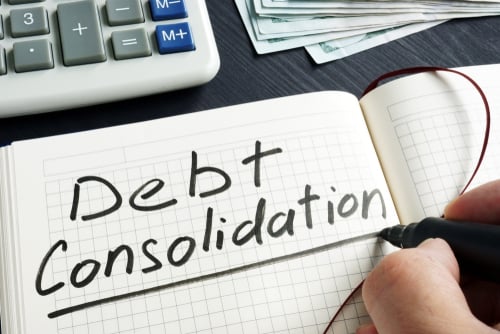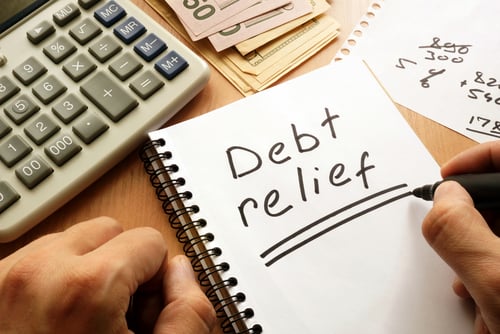How to Pay Off Your Credit Cards
Credit cards can be a useful financial tool when utilized properly and responsibly. For young people just getting started with building a credit history, a low credit limit unsecured credit card allows for making small purchases and timely repayments that lead to a healthy credit score and profile, and in turn, greater access to credit.
Credit cards can also play a useful role in the monthly budgeting process, often times alleviating situations of tight cash flow when necessities must be paid and a paycheck is still a few days away. Credit cards can be useful to have on hand for emergencies, as well. However, all too frequently, credit cards are misused as a vehicle to allow an individual to live beyond his or her means.
Over time, high-interest rate credit card debt can accumulate and become a psychological and financial burden, with minimum monthly payments barely putting a dent into balances owed.
High interest rate unsecured credit card debt revolves month after month, accumulates significant interest expense and becomes very expensive over time. Therefore, the issue of how to pay off credit card balances is an important one. Let’s take a closer look.

The Avalanche Method
One of the more popular approaches to paying off credit card debt is the Avalanche Method, which involves organizing your various credit cards by interest rate, ranking them from highest to lowest.
Regardless of the respective balances on the cards, the credit card with the highest interest rate is assigned the highest priority in the repayment process. After making certain to make the minimum monthly payment on each other card, determine the greatest amount that you can pay on the highest interest rate card, and make that payment.
Do the same thing the following month, and in each successive month, until the highest priority card is fully paid off. Repeat the process with the second-highest rated card, continuing to make minimum monthly payments on all remaining cards. Each time a card is fully paid off, there will be more money to pay off the fewer, remaining cards.
Over time, momentum gets generated, as the avalanche of debt repayment begins to take greater hold. The avalanche method results in paying less interest expense over time while helping you get out from under a mountain of credit card debt more quickly.

The Snowball Method
Another popular approach to paying off credit card debt is the Snowball Method, which involves organizing your various credit cards by their balances owed, ranking them from lowest to highest. Regardless of the respective interest rates on the cards, the credit card with the lowest balance is assigned the highest priority in the repayment process.
After making the minimum monthly payment on every other card, pay the greatest amount that you can afford on the card with the lowest balance. If necessary, do the same thing the following month, and until the card with the smallest balance is paid in full. Repeat the process on the card with the second-lowest balance, using the extra money that had been going to the previous lowest-balance card and applying it there.
Continue making the minimum monthly payments on the other remaining cards and enjoy the small victories as you proceed up the ladder of your credit card balances, wiping out the smallest one first, then the second-smallest balance, and so forth. T
he snowball builds as the money that had been used on the previously paid-off card gets applied to the new smallest card and the motivation generated through eliminating each card along the way helps the snowball pick up speed as it wipes away credit card debt.
Though the Snowball Method does not save as much interest expense over time as does the Avalanche Method, The Snowball Method is better suited for those individuals who need the motivation of quicker victories to maintain the discipline required to pay off a large pile of credit card debt.
Balance Transfers
Credit card balance transfers have been around for awhile – but they remain as useful as ever for paying off higher-interest rate credit card debt.
The best balance transfer credit cards include a 0% promotional rate for up to twenty-four months with modest fees attached (0-3% balance transfer fees), though even an introductory promotional rate of 3% for twelve months plus a 3-4% fee will easily represent an interest expense savings over an existing credit card balance with an APR closer to 18%.
Using a promotional rate balance transfer credit card fits in well with the Avalanche method, since transferring over the balance from the highest interest rate card will shift the repayment focus over to the next highest rated card while saving in interest expense.


Personal Installment Loans
Interest rates on personal installment loans are frequently lower than those attached to credit cards, so for those individuals carrying multiple cards with multiple payout dates, utilizing a personal loan to simplify the repayment process can make sense.
Keeping track of multiple cards with multiple payment cycles can get messy and lead to inadvertent late fees and/or missed payments, both of which can harm a credit score and profile. Apart from the convenience of streamlining the repayment process into one single monthly payment, the interest expense savings that can result from paying off credit card debt with funds raised through a personal installment loan makes good financial sense.
However, taking out an installment loan obviously means taking out more debt – so only pursue this option if you will truly use all of the funds generated from a personal loan to pay off your credit card debt.
Then, you must maintain the discipline not to fall back into poor spending habits with your freshly paid-off credit cards. If you think you may not be able to act responsibly with a personal installment loan or your freshly paid-off credit cards, then do not pursue this option.
Debt Settlement
Debt Settlement takes place when a creditor agrees to accept a negotiated amount less than the full balance owed.
This amount is agreed to in writing and can be paid in a lump sum or over time, and though creditors under no legal obligation to accept settlement offers, they are more likely to settle after an account has fallen delinquent for a period of several months.
You can contact the experienced debt settlement specialists at United Settlement to discuss your specific financial situation in order to see whether debt settlement is right for you.


Bankruptcy
Bankruptcy remains a final option for an individual facing an insurmountable pile of credit card debt. Bankruptcy is a legal procedure that allows an individual to discharge debts when they can no longer be paid.
A Chapter 7 bankruptcy proceeding involves the paying off of unsecured credit card debt through a liquidation of the debtor’s assets, while a Chapter 13 bankruptcy proceeding involves designing a three- to five-year repayment plan that necessitates paying off some creditors in order to have other debts forgiven.
When the repayment plan is completed, remaining debts are discharged. However, in either instance, bankruptcy should not be entered into lightly without an understanding of its long-term consequences.
A Chapter 7 bankruptcy remains on a credit report for ten years from the filing date, while a Chapter 13 bankruptcy remains on a credit report for seven years from the filing date, and either type of bankruptcy will have a strong negative impact on a credit score and profile.
Are you in debt? we can help
Get Debt Relief
Speak with licensed debt specialists dedicated to guiding you toward financial stability every step of the way.

Ready To Get Started?
See if you qualify for debt relief. Get a Free savings estimate to see how quickly you can be debt free.
Embrace financial freedom with our tailored solutions, expert guidance, and unwavering commitment to your success.
Experienced Professionals
Our experienced team has helped thousands of clients successfully eliminate debt and regain financial freedom.
Customized Solutions
We know every financial situation is different, so we design personalized debt relief plans to fit your specific needs and goals.
High Success Rate
Our proven debt relief strategies deliver real results. With a strong track record of success, we help clients achieve lasting financial stability.
Confidential Consultation
Your privacy is our priority. All debt relief consultations are 100% confidential and handled with the highest level of discretion.
Explore other blogs











